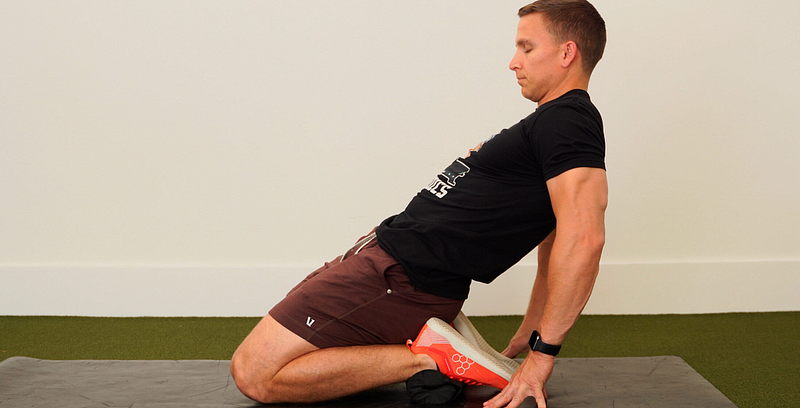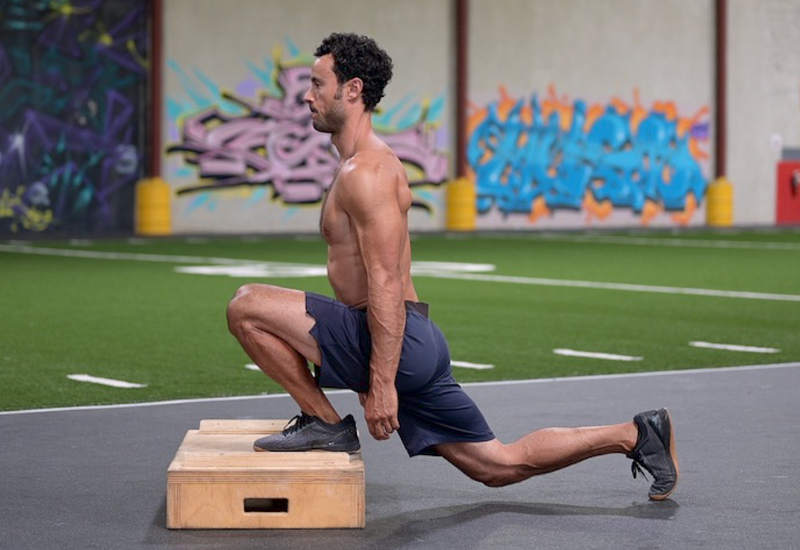How to Achieve Remarkable Flexibility Without Stretching
Written on
Understanding Flexibility and Mobility
Did you know that you can enhance your flexibility without ever stretching? It may sound unbelievable, but there are alternative methods to achieve that coveted state of flexibility. While static stretching offers some benefits, it's not the most effective way to become more limber. A closer look at the science reveals that resistance training is far superior, yet it often goes unnoticed.
Many people think that weightlifting makes you sore and stiff, but evidence suggests otherwise. When performed correctly, this type of training can significantly improve your flexibility and range of motion, surpassing what static stretching can accomplish.
The best part? This method is much quicker! Unlike the tediousness of static stretching, engaging in functional movements can revitalize your body efficiently and enjoyably. With consistent effort, you'll uncover remarkable advantages of weightlifting that you never thought possible.
Why Resistance Training Enhances Flexibility
Before diving into the science, it's crucial to acknowledge the risks associated with weightlifting and body-weight exercises. If you have any pre-existing injuries or chronic conditions, consult a healthcare professional before implementing any fitness advice outlined here.
Now, let's explore the essential concepts. Mobility refers to the range of motion of a joint, while flexibility pertains to the ability of a muscle or muscle group to passively stretch through that range without pain. The misconception that stretching is the only way to improve flexibility needs to be addressed.
Surprisingly, muscle tightness is not primarily about the length of muscle fibers. Take tight hamstrings, for instance. More often than not, the sensation of tightness originates from the fascia (the connective tissue) and is heavily influenced by your nervous system. The muscles themselves are usually not tight; rather, it's a complex interaction involving the spindles around these tissues and your nervous system that creates these sensations.
This realization is actually empowering. Since muscle tightness is largely a sensory issue, it means you have more control than you may think.
So, what does this mean for those looking to enhance their flexibility? We need to explore strategies that can help the nervous system adapt and reduce tightness. One of the most effective techniques involves performing slow, controlled movements that utilize a full range of motion under load. Eccentric movements, which focus on lengthening, are particularly beneficial.
This approach not only helps to structurally alter your muscles—a phenomenon known as sarcomerogenesis—but also trains your nervous system to recognize how functional and supple your body can truly be. Ultimately, this method fortifies your body for daily activities by safely exposing it to its most vulnerable areas, convincing your brain that you're strong and secure in each position.
“Your nervous system learns to both relax your muscles better as they stretch, as well as to be less sensitive to pain caused by stretching. As a result, you become neurologically capable of doing what your body was physically capable of doing all along.” — John Fawkes
With that in mind, let's put the advantages of resistance training to the test with three functional exercises! Aim to perform these movements 3 to 4 times a week for optimal results. Ensure you warm up adequately before starting and never push through pain or discomfort.
Warm-Up Example — Decline Squats

Application: 10–15 reps
Cues: This resembles a standard squat. Allow your knees to track slightly over your toes as you descend, rather than hinging at the hips. It may feel awkward initially. Once you reach a challenging depth, press back up by engaging your glutes. If a wedge is unavailable, use household items like books or boxes to achieve a decline of about 15–20 degrees at the ankle.
- Hamstring Sliders

Application: 2 sets of 10–15 reps
Cues: Lie on your back with your feet hip-width apart, resting on individual sliding discs. Squeeze your glutes to lift your hips without arching your lower back. Hold the bridge position and slowly extend your legs while maintaining glute engagement. Lower your hips to the ground and return to the starting position, focusing on strengthening the portion of the movement where your legs straighten.
Modifications: If sliding discs are unavailable, you can perform bridge walkouts to target the hamstrings similarly.
- The Reverse Nordic Curl

Application: 2 sets of 8–12 reps
Cues: Kneel on a mat with your knees bent at 90 degrees and your trunk upright. Gradually lean back while keeping your pelvis tucked and core engaged. Once you reach your maximum pain-free range, engage your glutes and push back to the starting position. Maintain a straight line from your knees to the top of your head to prevent injury.
Modifications: This exercise offers various adaptations:
- Level 1) Banded: Use a heavy resistance band anchored in front of you to reduce load.
- Level 2) Eccentric only: Focus on the lowering phase, using your hands for assistance when returning to the starting position.
- Level 3) Regular form: As shown above.
- Level 4) Single-leg with band: Extend one leg forward into a lunge position while using the band.
- Level 5) Single-leg: Perform without band support for increased difficulty.
- Elevated Split Squat

Application: 2 sets of 8–12 reps
Cues: Find a stable platform a few inches high. Position yourself in a split stance, distributing weight evenly between the front and back legs. To complete a rep, lean forward into a lunge while allowing your knee to track over your toes, keeping your heel on the platform. Hold for 2–3 seconds, then press through your heel and glute to return to a neutral position. Avoid stepping away from the riser after each rep; instead, transition between the neutral and lunge positions. Always work within your maximum pain-free range of motion.
Modifications: If the elevated squat feels uncomfortable, begin with a stationary lunge and gradually progress to an elevated version. Adjust the height of the platform until it challenges your mobility while maintaining stability.
Conclusion
If your goal is to become stronger and more flexible in various physical activities, consider incorporating the three exercises mentioned above into your routine. By thoughtfully designing your workouts, you can effectively harmonize your musculoskeletal and nervous systems, unlocking greater flexibility than you ever imagined.
It's time to debunk the myth that static stretching is the only path to flexibility. We've been misled for years, and this has hindered our progress. A more effective approach is available, and you already possess the necessary tools to embark on this journey today.
What are you waiting for? You've got this!
-David Liira, Kinesiologist